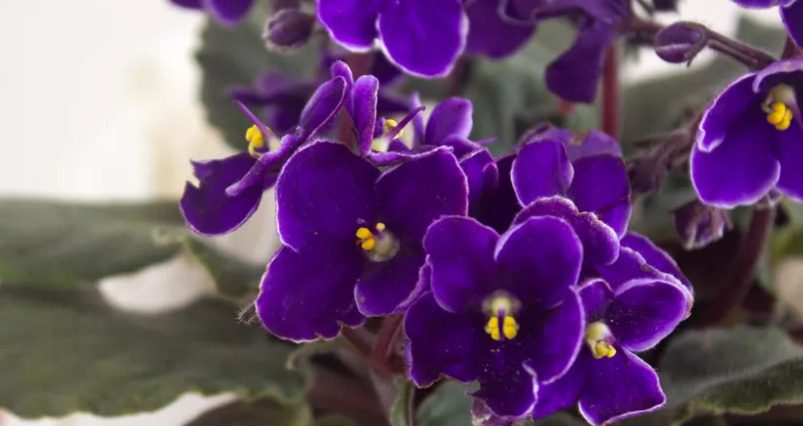African violets are beautiful plants that can add a lot of color to your home. Unfortunately, they also come with some problems! One of the most common issues is holes in the leaves or flowers. This blog post will teach you how to fix these problems so your African violet can thrive!
Why Are There Holes in My African Violet?
Your African violet has holes because it is being attacked by aphids or mealybugs. Aphids are small, green insects that suck the sap from plants and leave behind a sticky substance as they feed. Mealybugs look like little pieces of cotton stuck to your leaves!
While these are the most common pests, there are actually many pests that are known to eat the leaves on African violet plants. They enjoy doing this because African violets are high in sap, which is an important source of nutrients for these little pests!
You may not have seen these pests before as they enjoy coming out during the nighttime when we’re asleep! This means that you can have an infestation without even knowing it.
How to Prevent Holes in African Violet Leaves?
There are a few ways to prevent these insects from attacking your African violet. The first way is to make sure you don’t overwater your plant! Aphids like all the water, so if they get too much of it then they will leave and look for another host plant.
Another important step in preventing holes on your African violets is by getting rid of the pests that are already there. This can be done through an organic or chemical method, depending on your preference and what you’re comfortable with!
My favorite way to remove pests from plants is with neem oil (Amazon link), which is a natural insecticide that once applied will kill aphids and mealybugs on contact! You can also opt for a more traditional route with chemical pesticides, but make sure to follow all instructions carefully.
FAQ
Finding holes in an African violet can be an alarming thing to see. As such, I will now answer some questions that you might have about these pests and what they mean for your African violet.
Will the holes in my African violet kill my plant?
No, the holes will not kill your plant. They will only cause the leaves to die prematurely, which can impact how lush and full it looks! Additionally, these holes could also lead to diseases if they aren’t dealt with soon enough.
Can I cut off my African violet leaves with holes?
Yes, you can cut off the leaves that have holes. However, you should never remove more than a third of your plant at any given time as it could stress out the plant too much!
How do I get rid of aphids on my African violet?
You can use neem oil to kill aphids and prevent them from coming back! You can also use a commercial pesticide if you prefer, but make sure to follow all label instructions.
What if I see ants near my African violet?
Ants are a sign that you have aphids or mealybugs. They will bring them to your plant and enjoy feeding on the sap, so it’s important to get rid of them!
Will neem oil kill my other plants?
No, neem oil will not affect your other plants. It’s actually used as a safe way to kill many different types of insects on various crops!
How do I prevent insects in general?
You can use neem oil to prevent insects from eating your African violet. It can also be used on other crops, so this is an effective way to keep all of your plants pest-free!
Will the holes in my African violet close up again?
No, the holes in your African violet will not close up. You can remove the affected leaves to help encourage new growth, but this won’t repair any of the damage done by these insects!
Conclusion
In conclusion, it’s important to keep your African violet leaves free of holes! You can do this by making sure you don’t overwater it and using neem oil or other natural solutions. These are the best way to prevent any damage done to your plant!
I hope that this blog post answered your question on why there are holes in African violets! If you have any more questions, please feel free to reach out to me.
Tim is an avid gardener from the UK. He was the founder of PlantCarer.com from 2021 to Sep 2023. He sold PlantCarer.com to Aaron. He has since started his own business called Seed To Supper, which provides new gardeners all the materials you need in a box (pots, seeds, compost and instructions) to grow your own delicious and nutritious vegetables and herbs from start to finish – no garden required.

